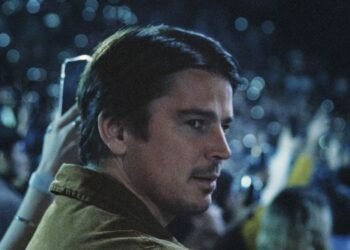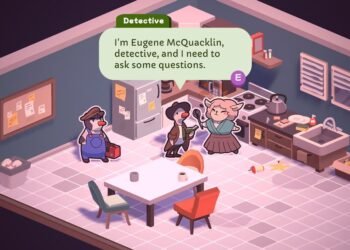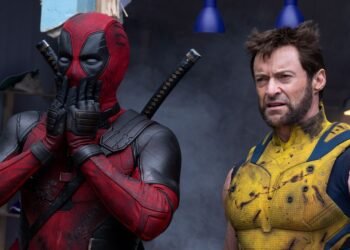The Polygon team is reporting in from the all-virtual grounds of the 2022 Sundance International Film Festival, with a look at the next wave of upcoming independent releases in sci-fi, horror, and documentary film.
Viewers not intimately familiar with the virtual-reality hangout platform VRChat might find it difficult to take in the importance of what its users are saying in the documentary We Met In Virtual Reality, because there are so many startling distractions. Director Joe Hunting used a virtual camera tool to shoot the entire movie inside VRChat, where users talk to him about how they’ve used the platform to get close to other people, forming relationships that sometimes cross over into real life. Many of his subjects tell hair-raising stories about their pasts, featuring alcoholism and addiction, family tragedies, abuse, mental illness, even a suicide attempt. It’s heavy stuff — but these conversations take place in a noisy cartoon carnival full of mix-and-match animal-robot-monster hybrids, and near-naked anime characters with outlandish anatomy falling out of skimpy fetish gear.
The contrast is dizzying, and it’s hard to keep the chaotic surroundings from trivializing what’s going on beneath the surface. This is a movie meant to introduce viewers to the real emotions people bring to their escapist fantasy worlds. But for most viewers, it’s more likely to simply be a confusing, exhilarating, context-free introduction to the fantasy world itself.
Part of Hunting’s commitment to shooting entirely within VRChat is that he doesn’t take time away from the platform to explain his goals or the setting. The doc just jumps straight into observing events, like the showcase where people introduce new VRChat spaces they’re developing for users to navigate. An early foray into one of those worlds-in-progress — a driving sim where users get to traverse a scenic route along winding roads and tall cliffs — is an entertaining window into VRChat’s strengths and flaws. The car the beta group test-drives is impressively detailed and realistic, but the physics of the space are dubious, especially when the avatars’ breasts flap wildly in the wind, as if the platform is interpreting them as hair or trailing clothing.
Sequences like this also make the documentary’s strengths and flaws equally clear. The driving-sim segment is surprisingly lengthy, while not speaking to Hunting’s central ideas at all — it’s just some random users horsing around with a new toy in their virtual space. Viewers don’t get to know them personally, or hear from the sim’s developers about their intentions or process. In VRChat, people casually speak over each other, so the scene is also a jumble of overlapping voices, reacting to what they’re experiencing in the VR space.
We Met In Virtual Reality does finally settle down into more relevant and emotional territory when Hunting gets his core subjects alone for serious talks. Two different couples discuss how they met on the platform, and how they navigate their real-life long-distance relationships, especially during COVID quarantines that have kept them from visiting each other. One small group — two cartoony “space dogs,” a giant hot dog with stick limbs, and a bespectacled Mogwai — talks about the freedom its members feel at being able to present themselves any way they want. In the film’s most moving segments, a young woman identified as “Jenny” teaches sign-language seminars, discusses her harrowing past, and translates stories about an equally harrowing past from “Ray,” a Deaf friend who only communicates through sign in VR.
That duo’s connection says everything Hunting is trying to get across through in this movie. Some of the other stories about emotional connections are old hat at this point, given how many people now find their partners through digital spaces, then have to navigate the physical distance between them. VRChat adds a new angle, since it’s so much like remotely playing a vast freeform video game together — the couples can go on dates in virtual worlds, hang out with friends or alone with each other, even stage an elaborate VRChat wedding for themselves. But Jenny and Ray’s relationship feels less like a familiar story. Both of them have survived immense loss and pain, and through a virtual fantasy space, both of them have found uplifting ways to support and help other people.

Image: Joe Hunting/Sundance Institute
Their focus on teaching sign language — and in the process, on making VRChat more inclusive and welcoming for deaf users — feels particularly bold in an environment where most people seem focused on play. Hunting’s doc jumps around in a distracted and sometimes formless way, but in the process, it does capture a wide range of users’ amusements, whether they’re competing at virtual pool, doing virtual stage improv to entertain other users, or waggling their avatars’ anatomy in a virtual exotic dance club. Even just existing in VRChat seems like a form of performance, given the custom avatars on display, which reveal a startling amount about the users’ fixations and fantasies. The sheer volume of wildly exaggerated, hypersexualized physiques tells its own story about how people want to imagine themselves.
Within such a personally tailorable environment, where everyone’s living out some form of wish-fulfillment, it’s no particular surprise that for some users, the ultimate fantasy is forming satisfying relationships. It does sometimes feel surprising that they were able to forge them in such a weird, wild setting. In that sense, at least, maybe the strongest message of Hunting’s phantasmagorical, often distracted documentary is that humanity has an instinct for turning every space into an opportunity to connect and communicate. The film certainly suggests that all human connection is meaningful and valid, no matter what kind of outlandish skin it wears.
We Met in Virtual Reality is currently seeking distribution.
























































